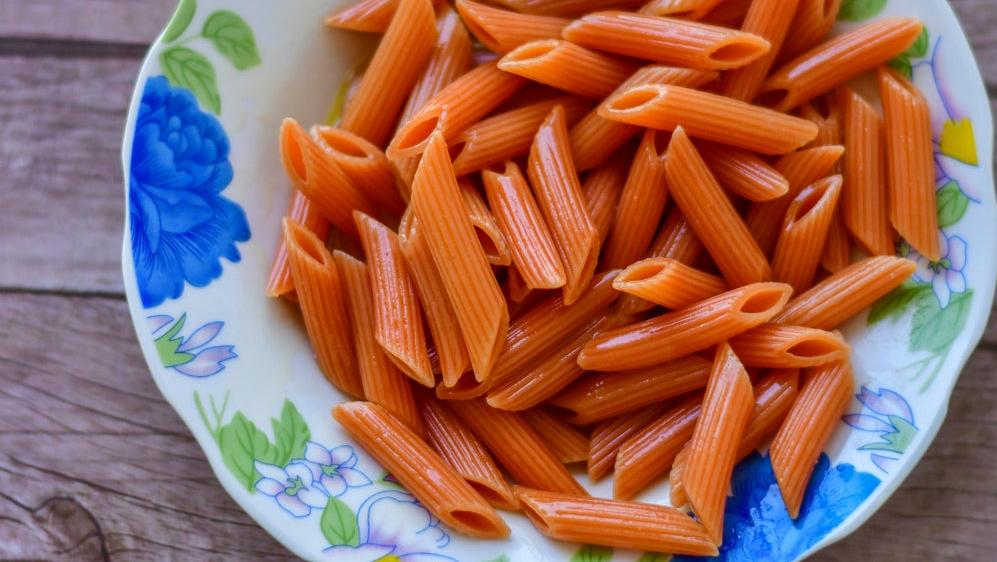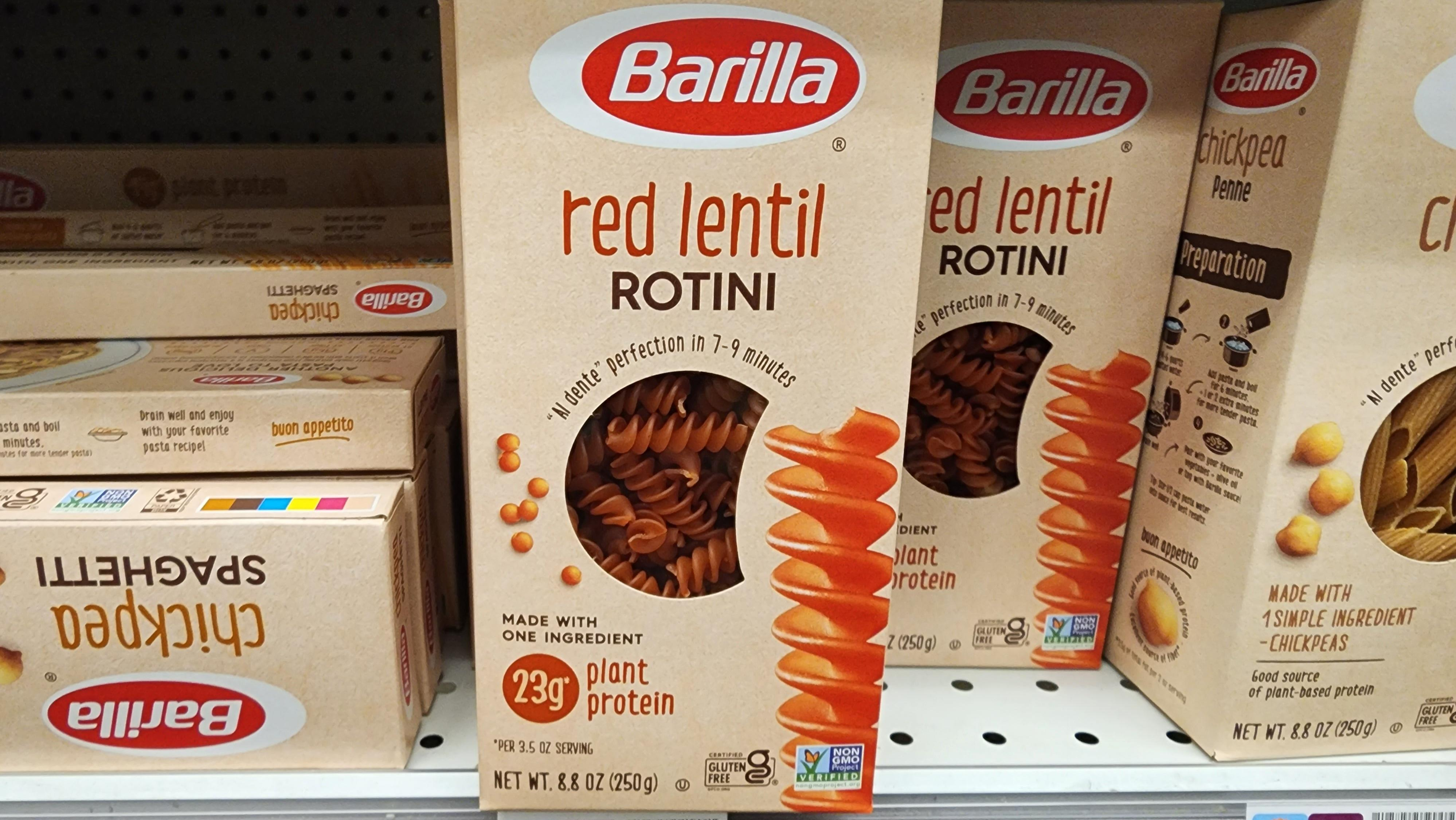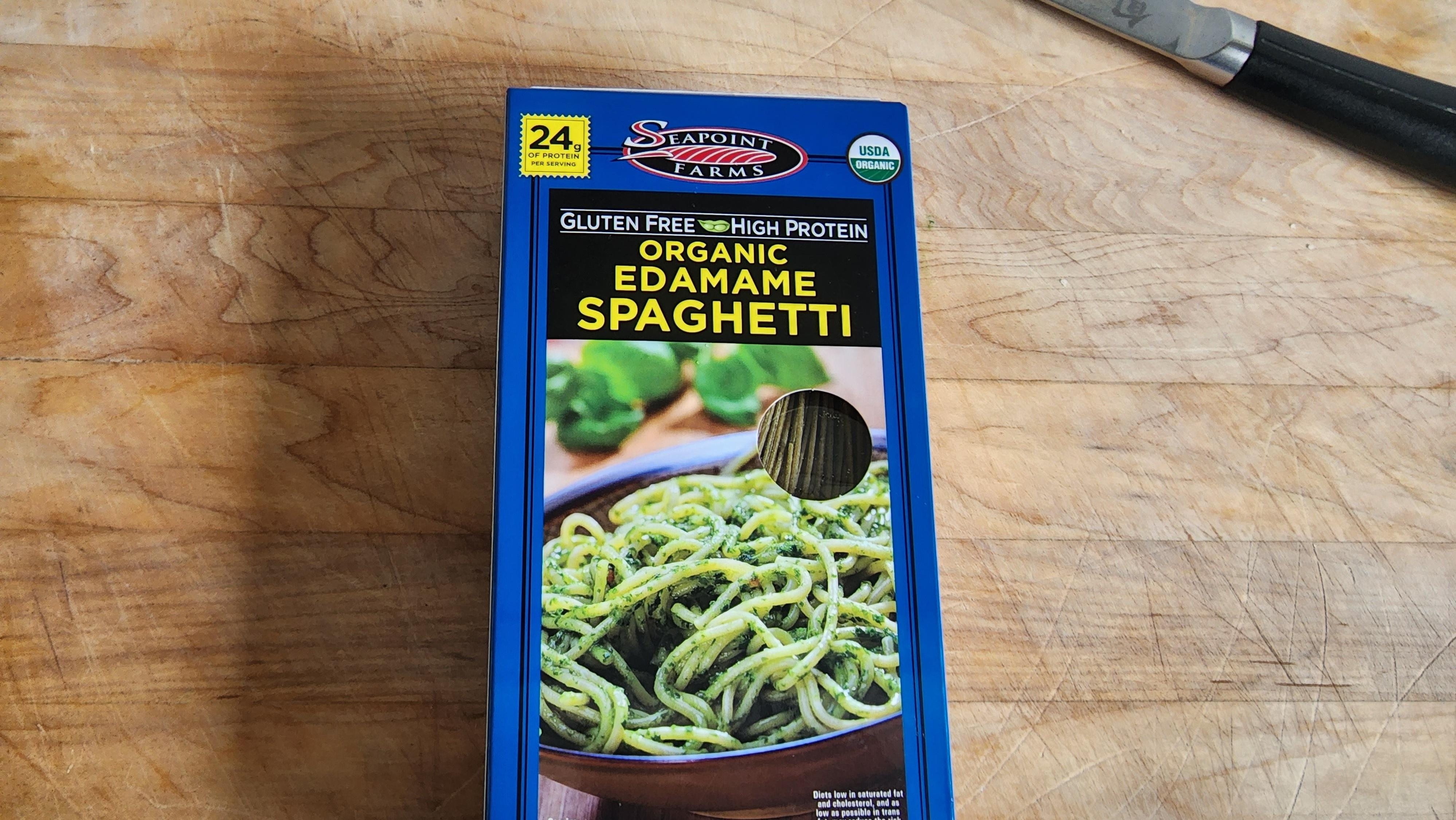These Pastas Will Disappoint You
Gluten-free, protein-rich pasta is a riddle with no answer.
I've had some pretty good experiences with gluten-free snacks over the past few years—frozen pizza, pancakes, and crackers have all surprised me. And when I say "gluten-free," I'm not talking about snacks that are incidentally and miraculously gluten free (like Utz cheese balls). I'm talking about foods that you have to use elbow grease and wizardry to make gluten-free. Products that usually come cauliflowerfied and macro'd; foods that insert protein where it shouldn't be. Sometimes this dark magic works. Other times, you're left with the paradox that is gluten-free, high-protein pasta.
The words "protein" and "pasta" don't belong anywhere near each other unless you're talking about developing gluten structure in dough (because remember, gluten is itself a protein). If you're gluten intolerant, I feel for you, and unfortunately GF pasta is your reality. But if you are otherwise able to consume traditional pasta and you're reading the back of the box to see what the protein content is, start over. Go back to the beginning. Try to remember that food is a pleasurable, enriching experience. I mean, what's the end goal of all this added protein? To make sure every last person on earth is jacked? To reduce every meal to a quantifiable set of nutritional yields? I'm not saying you shouldn't eat healthy—go ahead and do that—but there are certain foods that seemingly exist to rob eating of its joy.
Pasta should have chew, and it should have bounce. It should be toothsome. Words that should not be used to describe pasta include: gummy, grainy, coarse, and mealy. Unfortunately, those are descriptors that all come up when eating gluten-free, protein-enriched pasta. Let's talk about a few of these products, why they don't work, and what, if anything, is worth saving here.

Chickpea Pasta
Banza's gluten-free chickpea rotini boasts 25% fewer carbs and 50% more protein, and it's 100% certified gluten-free. Unfortunately, it also tastes like no pasta should. It's made from chickpeas, tapioca starch, pea protein, and xanthan gum. That last ingredient is how you know this is going to be bad—it's one that should just never be in pasta, since it's used to fuse and emulsify ingredients that often just have no business mingling with each other. Moreover, rotini and fusilli are meant to be springy pastas. Banza's versions are rigid, coarse, grainy tanks that feel like you're eating par-cooked pasta pellets.
I love chickpea flour; it's responsible for the crispy, creamy chickpea fries in Southern France known as panisse. I'm also a big fan of Banza's four cheese pizza, which is warm and hearty. But the pasta is a misstep. Chickpeas fused with other proteins and binders ain't it.
Red Lentil Pasta
Red lentil pasta is a step in the right direction, flavor-wise. I've tasted a few different brands, and they're always earthy, maybe even a little bit sweet. When cooked, it's the type of pasta I would happily cool down and use for a cold pasta salad of some kind, since its base flavor complements vinegar, herbs, cheese, and the like.
The problem with red lentil pasta is that, again, the end result is grainy, not bouncy. Barilla's red lentil rotini only lists one ingredient, red lentils (a good sign!), but its applications are few. It's a pasta salad pasta, nothing more. It fulfills one's need for good macros, but that's about it.
Edamame Pasta
Curveball: This edamame spaghetti was perfectly pleasant. Seapoint Farms edamame spaghetti is brittle and thin out of the box, almost like a delicate angel hair. The texture when cooked comes pretty damn close to spaghetti's natural chew, and there's only a tad bit of that unpleasant graininess you encounter with most protein pasta. You can still twirl this spaghetti with a fork (although it doesn't nest nearly as well as a true spaghetti does), and though it's a little dry, a buttery edamame flavor is present throughout. I hit this with some olive oil and salt, and I found it to be pretty damn enjoyable.
However, when consuming edamame pasta, it doesn't feel like you're eating spaghetti so much as a spaghetti-adjacent concept. I get the sense that you can cook this a few minutes longer than the 3-4 suggested minutes, maybe in a sauce to absorb more flavors. Will this be good with red sauce? No. Meatballs? Also no. But maybe in a primavera or an agilo e olio. This is something I would recommend highly to gluten-free friends. The edamame flavor is pretty damn good, and the chew here is nice, even if it's not the same. Maybe edamame pasta is the answer—that is, if you're someone who actually needs an alternative in the first place.


